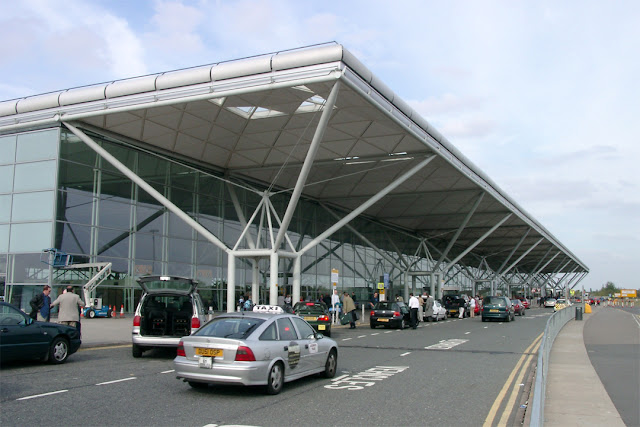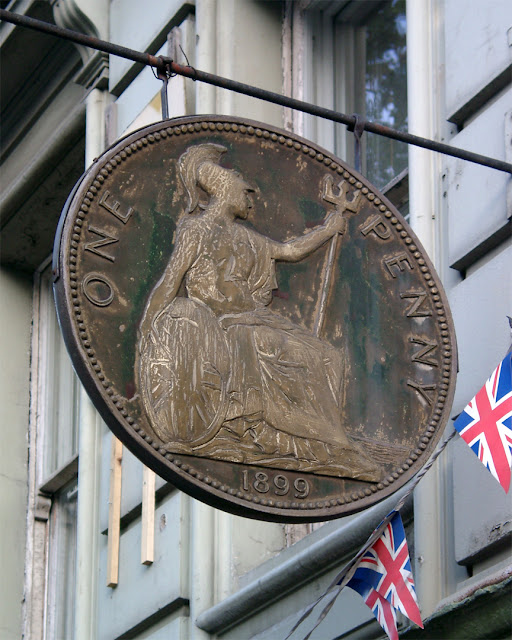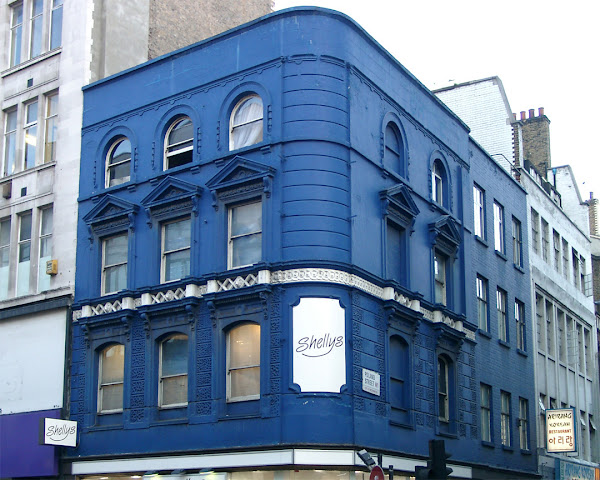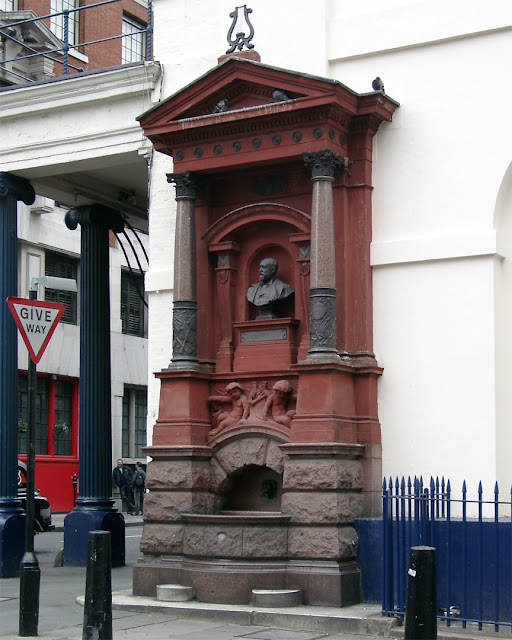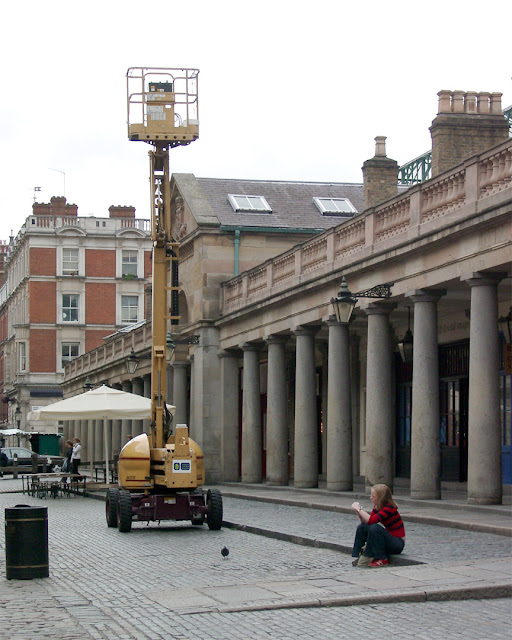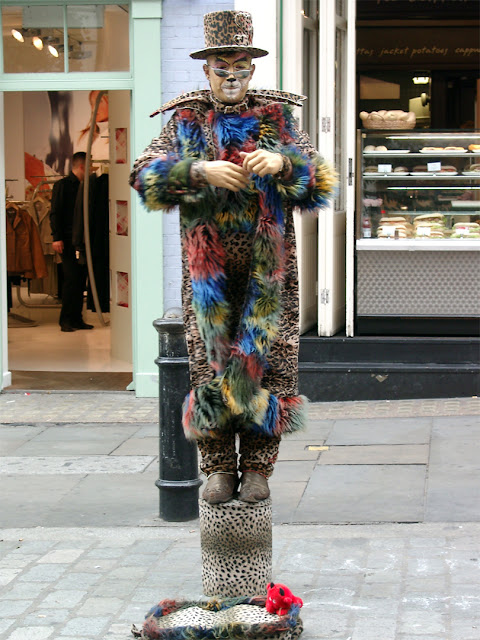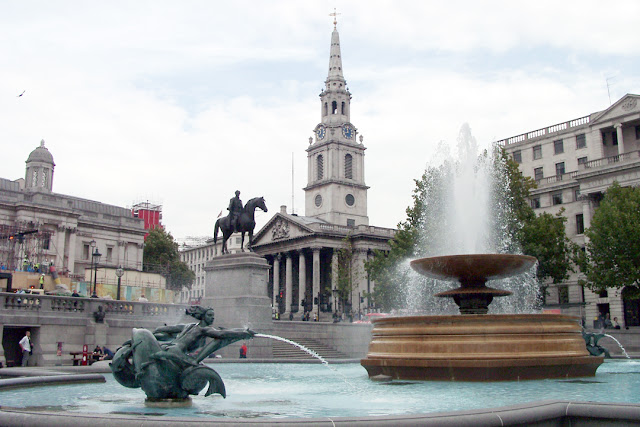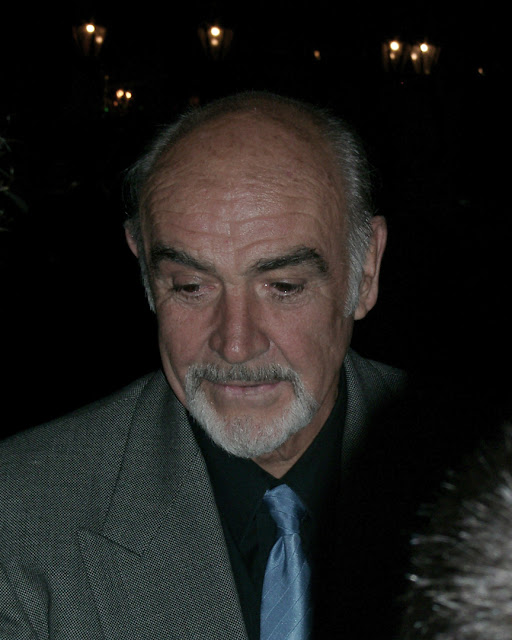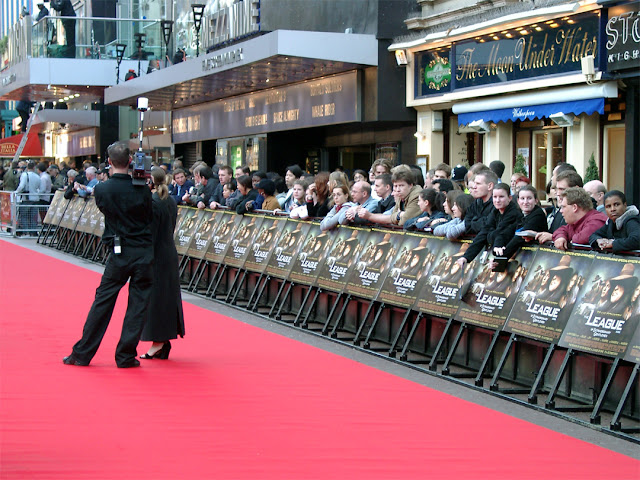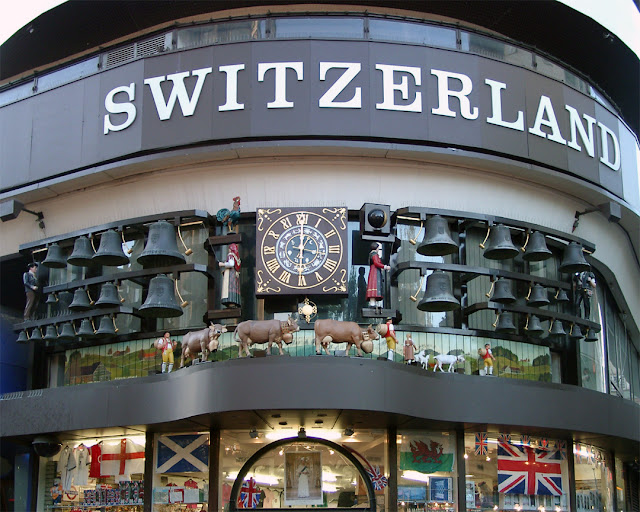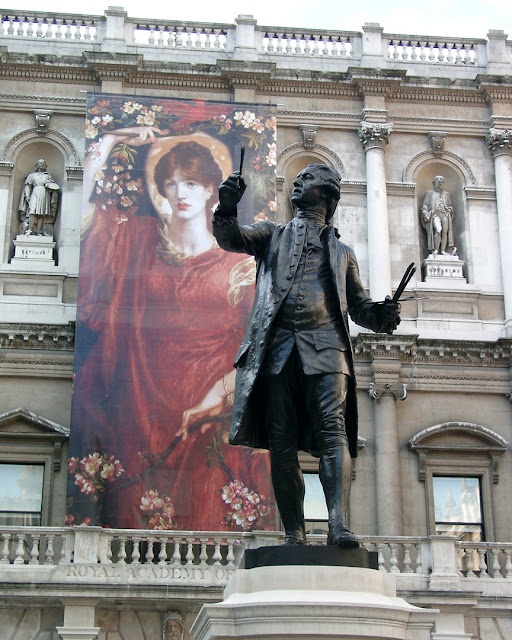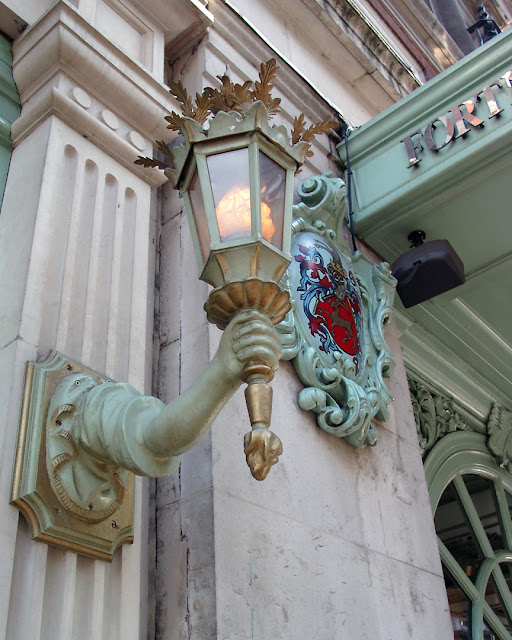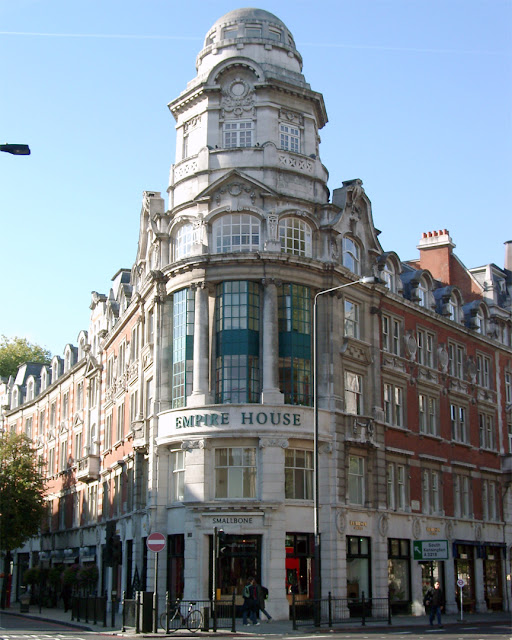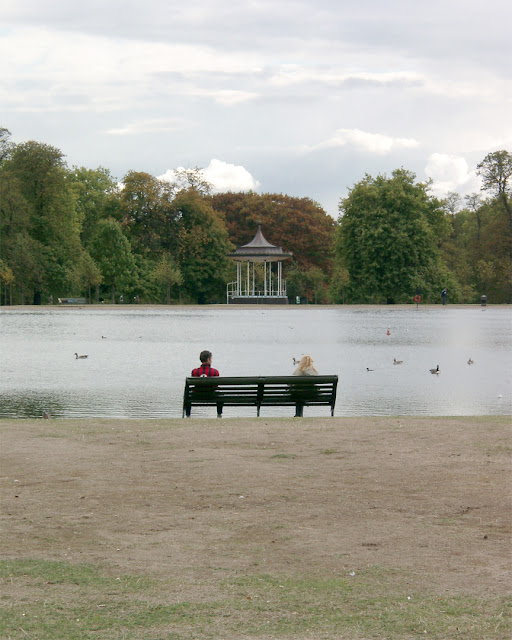Monday, February 28, 2005
London Stansted Airport
London Stansted Airport
Bassingbourn Road
Stansted Mountfitchet, Essex
United Kingdom, September 2003
“London Stansted Airport (IATA: STN, ICAO: EGSS) is an international airport located in Stansted Mountfitchet, Essex, England, 42 mi (68 km) northeast of Central London. London Stansted serves over 160 destinations across Europe, Asia and Africa. Stansted is a base for a number of major European low-cost carriers, being the largest base for low-cost airline Ryanair, with over 100 destinations served by the airline. In 2015, it was the fourth-busiest airport in the United Kingdom after Heathrow, Gatwick and Manchester. Stansted's runway is also used by private companies such as the Harrods Aviation, Titan Airways, and XJet terminals, which are private ground handlers that are able to handle private flights, charter flights, and state visits. Converted to civil use from RAF Stansted Mountfitchet in the late 1940s, Stansted was used by charter airlines. It came under British Airports Authority control in 1966. The privatised BAA sold Stansted in February 2013 to Manchester Airports Group as a result of a March 2009 ruling by the Competition Commission against BAA's monopoly position.” (London Stansted Airport, Wikipedia)
Sunday, February 27, 2005
Wild Cat and Wise Man
“Wild Cat” and “Wise Man” by Nadim Karam, 2003
Newcombe House
Notting Hill Gate, Kensington
London, September 2003
“In 1999, in a move to revitalize the Notting Hill main road in London, the Notting Hill Improvements Group (NHIG) commissioned artists for on-site interventions. Karam’s first proposal was a series of sculptures to be positioned on the building rooftops along the main street. His protagonists- the Wild Cat, Observers, Wise Man, Running Couple, Gatekeeper, Elephant, Ballerina and Headbanger- were inspired by aspects of local stories. Proceeding as funding became available, Karam began the project in 2003 with the Running Couple, the Wild Cat and Wise Man on city rooftops. The only sculpture to be placed on street level was the Carnival Elephant, in a yearlong evocation of Notting Hill’s two-day summer carnival. Given a pink wall as backdrop and position on the main street pavement, it was almost entirely transparent, with riotous structural lines and a spinning eye. The elements connected with each other visually to add new stories to contemporary Notting Hill; its gentrification, its underground music scene, its mixed population, its antique markets and its location as one of Europe’s biggest street carnivals.” (Notting Hill Stories, Nadim Karam)
Saturday, February 26, 2005
Friday, February 25, 2005
Centre Point
Centre Point, 1966
New Oxford Street
London, September 2003
“Centre Point is a building in Central London, comprising a 34-storey tower; a 9-storey block to the east including shops, offices, retail units and maisonettes; and a linking block between the two at first-floor level. It occupies 101–103 New Oxford Street and 5–24 St Giles High Street, WC1, with a frontage also to Charing Cross Road, close to St Giles Circus and almost directly above Tottenham Court Road tube station. The site was once occupied by a gallows. The building is 117 m (385 ft) high, has 34 floors and 27,180 m2 (292,563 sq ft) of floor space. Constructed from 1963 to 1966, it was one of the first skyscrapers in London, and as of 2009 was the city's joint 27th-tallest building. It stood empty from the time of its completion until 1975, and was briefly occupied by housing activists in 1974. Since 1995 it has been a Grade II listed building. In 2015 it was converted from office space to luxury flats.” (Centre Point, Wikipedia)
Thursday, February 24, 2005
Wednesday, February 23, 2005
Tuesday, February 22, 2005
Dual-purpose ladder
London Fire Brigade dual-purpose ladder
Oxford Street
London, September 2003
“The dual-purpose ladder (DPL) is the standard fire engine deployed to all 999 emergency calls by the London Fire Brigade. There are 102 DPLs in operation across the city, with 45 in reserve and 25 used for training purposes. The DPL typically carries 13.5 m and/or 9 m ladder extensions, eight 18 m lengths of hose-reel tubing, four 23 m lengths of 45 mm hose, ten 23 m lengths of 70 mm hose, cutting equipment, a portable generator, a lightweight portable pump, water-packs, inflatable airbags, road signs, floodlights, a medical kit, hose ramps, general tools, chemical suits and breathing apparatus. At fire stations with two DPLs, one will be a 'pump' and the other a 'pump ladder', both carrying a short extension ladder and cat ladder for climbing roofs. The pump carries the 9 m ladder, the pump ladder carries the 13.5 m, whilst stations with only one DPL will carry both. DPLs weigh around 11.2 tonnes, and are approximately 7.7 m long, 2.3 m wide and 3.2 m high. They carry up to 1,365 litres of water and have a pumping capacity of 3,910 l/min.” (London Fire Brigade appliances, Wikipedia)
Monday, February 21, 2005
Sunday, February 20, 2005
Saturday, February 19, 2005
Augustus Harris memorial fountain
Augustus Harris memorial fountain by Sidney R. J. Smith, 1897
Bronze bust by Sir Thomas Brock
Theatre Royal, Drury Lane
Catherine Street
London, September 2003
“Sir Augustus Henry Glossop Harris (18 March 1852 – 22 June 1896) was a British actor, impresario, and dramatist, a dominant figure in the West End theatre of the 1880s and 1890s. Born into a theatrical family, Harris briefly pursued a commercial career before becoming an actor and subsequently a stage-manager. At the age of 27 he became the lessee of the large Theatre Royal, Drury Lane, where he mounted popular melodramas and annual pantomimes on a grand and spectacular scale. The pantomimes featured leading music hall stars such as Dan Leno, Marie Lloyd, Little Tich and Vesta Tilley. The profits from these productions subsidised his opera seasons, equally lavish, starrily cast and with an innovative repertoire. He presented the first British production of Die Meistersinger and the first production anywhere outside Germany of Tristan und Isolde, and revitalised the staging of established classics. Harris remained in charge at Drury Lane for the rest of his life, and in 1888 took on the additional responsibility of running the Royal Italian Opera House, Covent Garden, modernising its productions and repertory and abandoning the old convention that all operas, whatever their nationality, were sung in Italian. He changed the name of the theatre to The Royal Opera House in 1892. Both at Drury Lane and Covent Garden he engaged the most admired artists, including Hans Richter and Gustav Mahler as conductors, and Emma Albani, Nellie Melba, Adelina Patti, Jean and Édouard de Reszke and Victor Maurel among the singers. In 1892 Harris took over the failed Royal English Opera House and turned it into a successful music hall with the new name The Palace Theatre of Varieties. He was active in civic affairs, a member of the new London County Council, a sheriff of the City of London and a prominent Freemason. His health gave way under the pressure of his multifarious activities, and after a short illness he died at the age of 44.” (Augustus Harris, Wikipedia)
Friday, February 18, 2005
Thursday, February 17, 2005
Eiffel Tower in London
Eiffel Tower in London
Jubilee Market, Jubilee Hall
Tavistock Court, Covent Garden
London, September 2003
Wednesday, February 16, 2005
Tuesday, February 15, 2005
Beyond the fountain
National Gallery, St Martin-in-the-Fields
South Africa House, fountain
Trafalgar Square
City of Westminster
London, September 2003
“In 1841, following suggestions from the local paving board, Barry agreed that two fountains should be installed to counteract the effects of reflected heat and glare from the asphalt surface. The First Commissioner of Woods and Forests welcomed the plan because the fountains reduced the open space available for public gatherings and reduced the risk of riotous assembly. The fountains were fed from two wells, one in front of the National Gallery and one behind it connected by a tunnel. Water was pumped to the fountains by a steam engine housed in a building behind the gallery. In the late-1930s it was decided to replace the pump and the centrepieces of the fountains. The new centrepieces, designed by Sir Edwin Lutyens, were memorials to Lord Jellicoe and Lord Beatty, although busts of the admirals, initially intended to be placed in the fountain surrounds were placed against the northern retaining wall when the project was completed after the Second World War. The fountains cost almost £50,000. The old ones were presented to the Canadian government and are now located in Ottawa's Confederation Park and Regina's Wascana Centre.” (National Gallery, Wikipedia)
Monday, February 14, 2005
Sainsbury Wing
Sainsbury Wing
The National Gallery
St Martin's Street
West End, City of Westminster
London, September 2003
“The most important addition to the building in recent years has been the Sainsbury Wing, designed by the postmodernist architects Robert Venturi and Denise Scott Brown to house the collection of Renaissance paintings, and built in 1991. The building occupies the ‘Hampton's site’ to the west of the main building, where a department store of the same name had stood until its destruction in the Blitz. The Gallery had long sought expansion into this space and in 1982 a competition was held to find a suitable architect; the shortlist included a radical high-tech proposal by Richard Rogers, among others. The design that won the most votes was by the firm Ahrends, Burton and Koralek, who then modified their proposal to include a tower, similar to that of the Rogers scheme. The proposal was dropped after the Prince of Wales compared the design to a ‘monstrous carbuncle on the face of a much-loved and elegant friend’, The term ‘monstrous carbuncle’, for a modern building that clashes with its surroundings, has since become commonplace.” (National Gallery, Wikipedia)
Sunday, February 13, 2005
Sean Connery
Sean Connery
The League of Extraordinary Gentlemen premiere
Leicester Square
City of Westminster
London, September 2003
Saturday, February 12, 2005
Red carpet
The League of Extraordinary Gentlemen premiere
Leicester Square
City of Westminster
London, September 2003
Friday, February 11, 2005
Swiss Centre
Swiss Centre
Coventry Street
City of Westminster
London, September 2003
“The Swiss Centre was a popular tourist attraction on the edge of Coventry Street, London, at its junction with Leicester Square. The 14 storey building was both a showcase for Switzerland and its products, and a trade and commercial centre that featured a Swiss bank, tourist office, a chocolate and souvenir shop, a Swissair ticket office, a cafe and several Swiss themed restaurants which were located in the basement. It was designed by David Aberdeen and built by John Laing & Son and Token Construction Company Limited between 1963 and 1966, to include a podium above the shops located at street level, and an 11 storey tower block with office floors, residential spaces, a penthouse, a viewing gallery and a plant room. Over the years the connection with Switzerland faded out: several shops remained vacant, and British souvenir stalls took over the commercial spaces since the late nineties. The building did not fit its purpose anymore nor with the new intended design for an improved pedestrian square, and it was finally demolished in 2008.” (Swiss Centre, Wikipedia)
Thursday, February 10, 2005
Wednesday, February 9, 2005
Fiammetta and Reynolds
Statue of Joshua Reynolds
Royal Academy of Arts
Annenberg Courtyard, Burlington House
Piccadilly, City of Westminster
London, September 2003
“A statue of Sir Joshua Reynolds stands in the Annenberg Courtyard of Burlington House, off Piccadilly in the City of Westminster, London, England. Reynolds was the first president of the Royal Academy, who occupy the main wing of Burlington House. The work is by Alfred Drury, himself a member of the RA, and was erected by the RA and the Leighton Fund in 1931. It was Grade II listed in February 1970 and its inscription was re-carved 2002. Near the statue are fountains, installed in 2000, arranged in the pattern of the planets at the time of Reynolds' birth.” (Statue of Joshua Reynolds, Wikipedia)
Tuesday, February 8, 2005
Monday, February 7, 2005
Royal Academy of Arts
Royal Academy of Arts
Burlington House
Piccadilly, City of Westminster
London, September 2003
“The Royal Academy of Arts (RA) is an art institution based in Burlington House on Piccadilly in London. Founded in 1768, it has a unique position as an independent, privately funded institution led by eminent artists and architects. Its purpose is to promote the creation, enjoyment and appreciation of the visual arts through exhibitions, education and debate.” (Royal Academy of Arts, Wikipedia)
Sunday, February 6, 2005
Annunciation
“Annunciation” by Andrew Burton
Cromwell Place and Thurloe Place
London, September 2003
“Art-lovers, politicians and other local dignitaries will gather in South Kensington on 20 January to officially unveil a thought-provoking sculpture. ‘Annunciation’ by Andrew Burton once took pride of place in Holland Park, but now stands at the junction of Cromwell Place and Thurloe Place, close to the world famous Exhibition Road. It will be officially unveiled in its new position by Lord McIntosh of Haringey, the Minister for Media and Heritage. Viewed by millions of tourists every year, the sculpture is set to become another focal point of culture in a part of London that is not short of fine art. Cllr Daniel Moylan, Deputy Leader and Cabinet Member for Planning Policy and Transportation said: "South Kensington is home to some of the finest museums in the country and now we are also proud to be the home of this exceptional sculpture. "This work of art will not only enhance South Kensington but will also provide tourists and visitors with a thought-provoking exercise in artistic evaluation." 'Annunciation' speaks of a new era, introducing the artist's message about the passage of time and movement through the introduction of cogs or wheels that carry two horn-like forms aloft. The sculptor, who is the head of Department of Fine Art at the University of Newcastle upon Tyne, has a passion for India and Indian cultural artifacts, and Annunciation also brings to mind the large processional floats used in religious festivals in that country. The sculpture was originally part of the Bronze Contemporary British Sculpture Exhibition organised by RBKC together with Sculpture at Goodwood to mark the Millenium.” (Official unveiling of ‘Annunciation’, The Royal Borough of Kensington and Chelsea)
Saturday, February 5, 2005
Breathless
“Breathless” by Cornelia Parker, 2001
(silver-plated brass wind instruments, flattened and suspended on stainless steel wire)
Victoria and Albert Museum
Cromwell Road
London, September 2003
“For her work, Cornelia Parker squashed 54 brass instruments! And then hung them using wire! She squashed the instruments using the hinges of Tower Bridge! They were flattened as the bridge opened and closed. She has named this artwork Breathless, because you can’t blow through the instruments anymore. You might get out of breath if you tried! This piece fits into a round ceiling space (a rotunda) of the V&A museum perfectly. The instruments are designed to be seen from both above and below. When an artwork has been made for a certain place and fills up or changes the space it is called an installation.” (Women Artists in the V&A Collection, Victoria and Albert Museum)
Friday, February 4, 2005
Waterhouse's Monkeys
Waterhouse's Monkeys
Natural History Museum
Cromwell Road, South Kensington
London, September 2003
“Three of the arches of the Central Hall are adorned with 78 monkeys like the one above. They were part of Waterhouse's designs for the museum. He was keen on accuracy, and checked his initial sketches with the museum's scientific staff before allowing the carving and moulding to take place.” (7 Secrets of the Natural History Museum, Wikipedia)
Thursday, February 3, 2005
Wednesday, February 2, 2005
The bench and the bandstand
The bench and the bandstand
Round Pond
Kensington Gardens
London, September 2003
“The Round Pond is an ornamental lake in Kensington Gardens, London, in front of Kensington Palace. The pond was created in 1730 by George II. It is approximately seven acres (2.8 ha) in extent, measuring approximately 200 by 150 metres (660 by 490 ft). It is up to 5 metres (16 ft) deep. Despite its name, it is not circular, but rectangular with stepped and rounded corners. With a long history of popularity with model yacht enthusiasts, it is the home of the Model Yacht Sailing Association (established 1876) and the London Model Yacht Club (established 1884).” (Round Pond, Wikipedia)
Tuesday, February 1, 2005
Subscribe to:
Posts (Atom)

